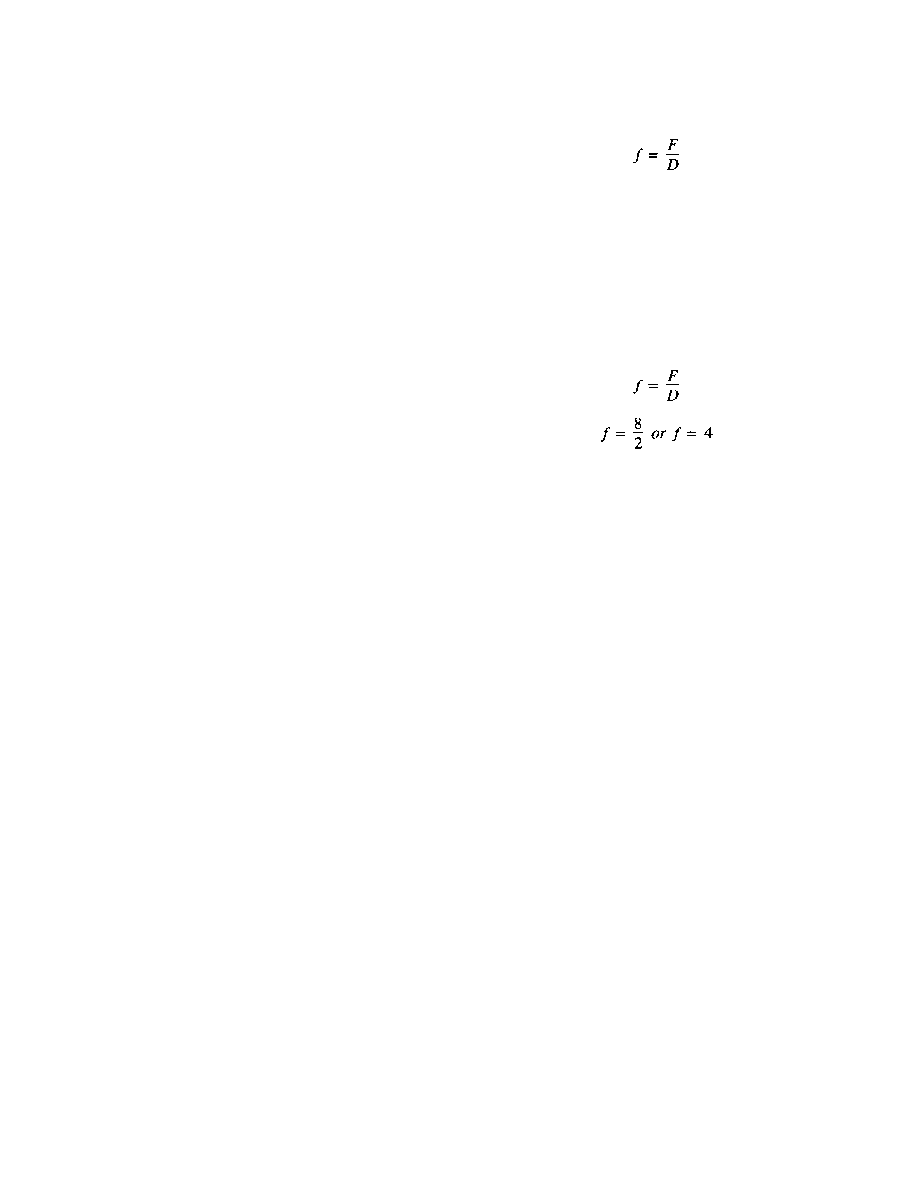
DOFMaster
for Windows
On-line
Depth of Field
Calculator
DOFMaster for Mobile Devices
On-line
Depth of Field
Table
Hyperfocal
Distance Chart
Articles
FAQ
Recommended
Books
Support
Contact
Links
Home
for Windows
On-line
Depth of Field
Calculator
DOFMaster for Mobile Devices
On-line
Depth of Field
Table
Hyperfocal
Distance Chart
Articles
FAQ
Recommended
Books
Support
Contact
Links
Home
As an Amazon Associate I earn from qualifying purchases.
![]()
the 50mm lens. The cow is now 140 feet from the
camera, but her image is four times larger. In the
photograph, it looks as if she were only 35 feet away or
25 feet behind the fence. The results! An interesting
picture and pleasing composition. Choosing viewpoint
and then selecting focal length for image size is one of
the most important functions you should consider when
selecting lens focal length.
technical fields within the modem Navy. This has led to
greater emphasis on the correct and accurate use of the
most important part of the camera-the lens. The higher
standards of picture quality and the greater interest in
picture taking regardless of lighting conditions, all
demand more attention to the correct use of lenses. No
matter how good the quality of the lenses, if
photographers do not use them correctly, they will not
do us or the Navy any good.
lens and the brightness of the image produced at the
focal plane. The aperture of a lens is simply the opening
through which light passes. The aperture is controlled
by an adjustable diaphragm or iris. Each setting of the
diaphragm is called an f/stop and is always read as a
the f/stop or the f/stop of the diaphragm opening. This
value is designated by a lowercase f with a slant (/)
the diameter of the opening in the diaphragm is one
eighth of the lens focal length, but only "when the lens
is focused on infinity." In this example f/8 is the
effective aperture. If the lens were focused at other than
study of the relationship between aperture and image
The term relative aperture then refers to the ratio
between the effective aperture of the lens and its focal
length. The relative aperture of a lens is controlled by
two factors: (1) the diameter of the beam of light passed
by the lens; and (2) the focal length of the lens, which
governs the size of the area over which the light is
spread.
length of 8 inches and the diameter of the effective
formed by the beam of light passing through the smaller
opening becomes dim. As the size of the opening is
reduced, the ratio between the aperture and the focal
length increases. Thus an inverse relationship exists
between the E/number and the relative aperture; as the
f/stop becomes larger, the size of the relative aperture
decreases.
focal length provide the same amount of light on the
focal plane; that is, when all the other factors that affect
image brightness remain constant (fig. 1-23).
device is a diaphragm, and its scale increments are
called f/stops (fig. 1-24). It is located within the lens to
cut off or obstruct the marginal light rays while
permitting the more central rays to pass. Most lenses
have a series of thin metal leaves for this purpose. These
leaves are arranged and shaped to provide an
approximately circular opening that can be changed in
Basic Photography Course

As an Amazon Associate I earn from qualifying purchases.
WWW.DOFMASTER.COM
© 2006 Don Fleming. All rights reserved.
© 2006 Don Fleming. All rights reserved.